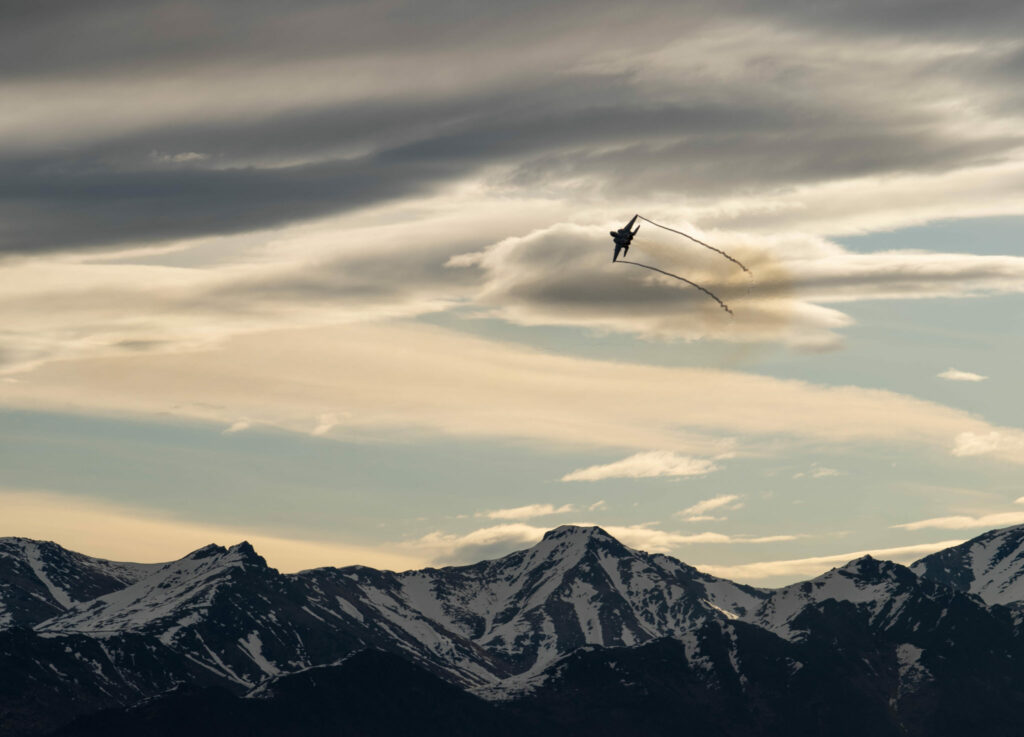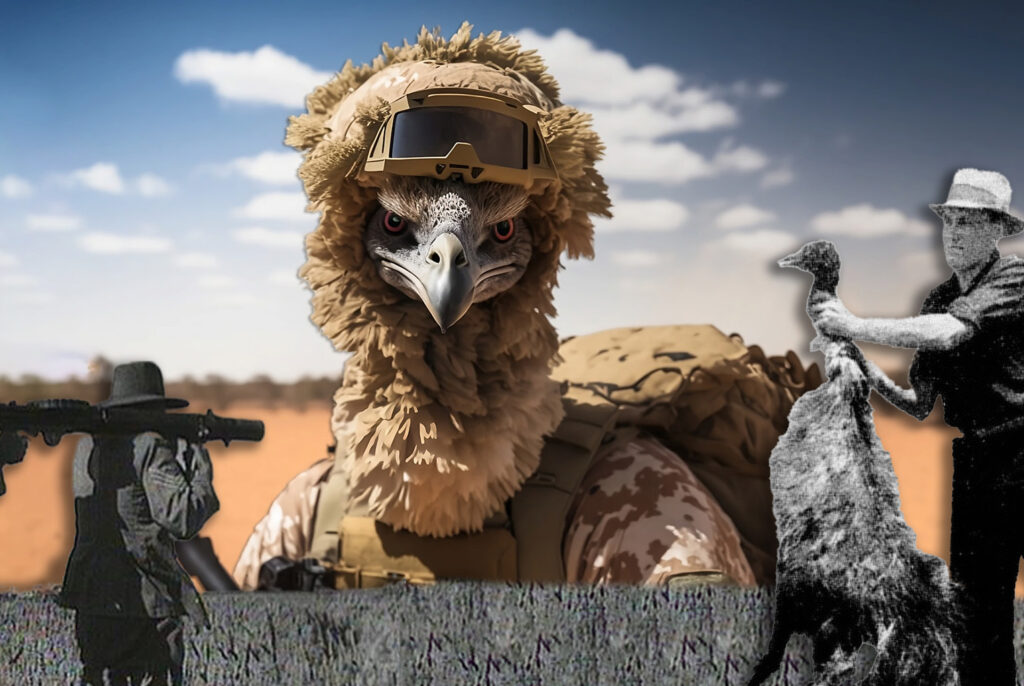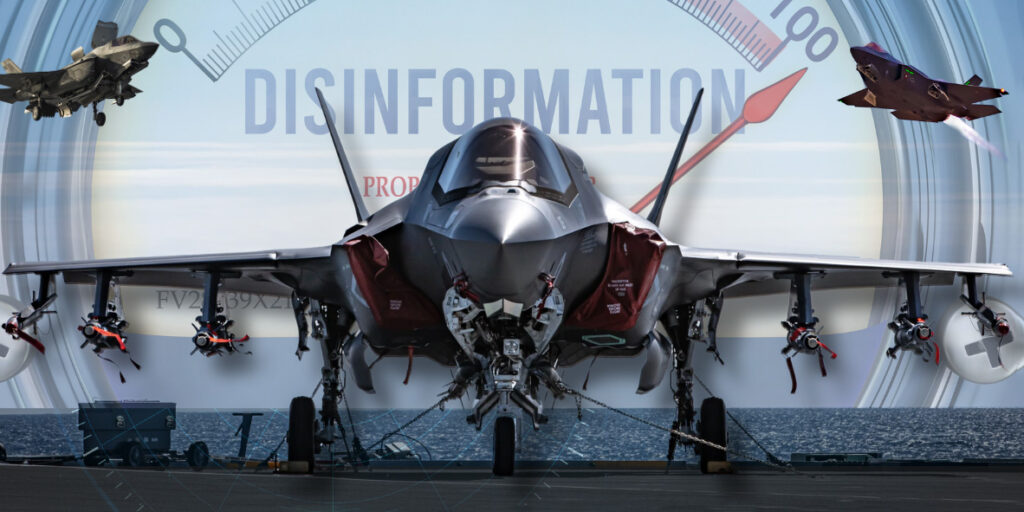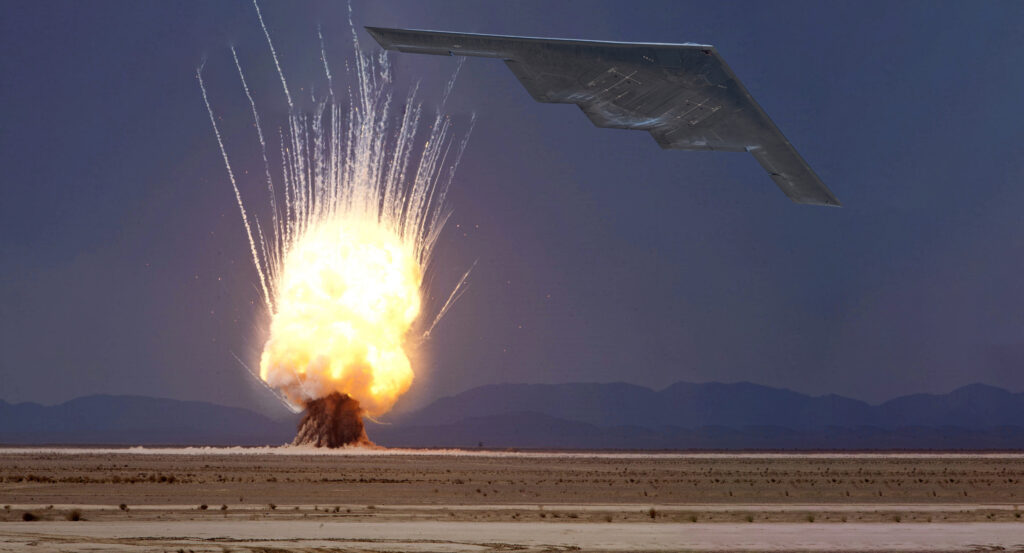Air Force’s new F-15EX makes dogfighting debut in Alaska war games
- By Alex Hollings
Share This Article

The U.S. Air Force just started taking delivery on the new F-15EX Eagle II in March of this year, but the jets already found their way into a massive force-on-force war game held in Alaska this month. Thus far, only two F-15EXs have been delivered, and both saw action during the exercises.
The war game, dubbed Northern Edge ’21, saw the new F-15EX integrating with the older air superiority workhorse F-15Cs they’re slated to replace, as well as the fighter’s fifth-generation counterparts in the F-22 Raptor and F-35 Joint Strike Fighter. It also accompanied F-15E, or Strike Eagles, which are versions of the famed fighter designed specifically for air-to-ground engagements. The two F-15EXs flew alongside a force of as many as 50 jets as they closed with and engaged an aggressor force of similar size and capability.

Related: THE F-15EX MAY BE THE BADDEST 4TH-GEN JET ON THE PLANET
“Northern Edge is an essential event for operational tests,” said Col. Ryan Messer, 53rd Wing commander.
“It is one of only a handful of exercises that combine great power competition-level threat complexities with the joint interoperability necessary to realistically inform our test data.”
Officially, the Air Force has not released any figures to indicate how well the newest fourth-generation fighter performed, but they did acknowledge that the F-15EXs both successfully shot down opponents and took losses themselves over the course of some 33 sorties during April and May.
The intent wasn’t to see if the F-15EX could dominate in an air-to-air environment, so much as to throw America’s airpower assets into a realistic approximation of a fight with a highly-capable near-peer opponent like China. That means the new F-15s weren’t just hunting down other fourth-generation jets in their air superiority role, but likely also had to contend with low-observable or stealth platforms among their opponents.

Related: WHY IS AMERICA BUYING THE F-15EX INSTEAD OF MORE F-35S?
“If you go into any large force exercise and you come back with everybody—with no blue losses—I would probably say that your threat is not as robust as it needs to be, in order to get the learning,” Lt. Col. John O’Rear of the 84th Test and Evaluation Squadron said.
O’Rear would not offer details into the incidents in which the F-15EXs were notionally shot down, but he did offer a little insight into the types of threats the new fourth-generation fighter was unable to counter. In what should come as little surprise, the Eagle II seemed to suffer at the hands of attacks from significant distances, where its lack of stealth likely made it easy pickings for low-observable jets. If that was the case, the F-15EX was almost certainly not alone in this failing.
“In this kind of environment, most of your blue ‘deaths’ are probably going to be outside of visual range, just because of the threat we’re replicating,” he explained.

A lack of stealth can make a fighter far more susceptible to these beyond visual range attacks, where aircraft and air defense systems can identify a fighter on radar and launch a missile at it well before the two opponents can actually see one another. Missiles often travel at speeds faster than five times that of a combat aircraft, making them challenging to react to, let alone outmaneuver. This vulnerability to attack is one of the biggest arguments in favor of an all-stealth fleet of fighters that grew to prominence after the Air Force chose to order new F-15EXs.
But as headlines that followed have since demonstrated, America’s only in-production stealth fighter, the F-35, is extremely expensive to operate and still has a number of issues to be worked out, making it not only a poor fiscal choice, but even a bad tactical one for many missions. In order to have the amount of firepower the Air Force needs at a cost it can afford, the branch will be forced to operate stealth and non-stealth aircraft in conjunction with one another for decades to come.
While practically all modern fighters are considered “multi-role,” or able to handle both air-to-air and air-to-ground engagements with varying degrees of expertise, each jet has a specific role its intended to excel in. The F-15C and F-15EX, along with the stealthy F-22, are all considered air superiority fighters, or aircraft that specialize in engaging other fighters. The F-15E and, to a slightly lesser extent, the F-35 are both aircraft that specialize in engaging ground targets.

Related: HOW MUCH CHEAPER IS THE F-15EX COMPARED TO THE F-35?
The F-35, often referred to as a “quarterback in the sky” by pilots, is also often tasked with managing the battlespace, using its onboard computing power and significant situational awareness to coordinate other jets in the fight. The F-15EX boasts improved cockpit displays and a greater degree of situational awareness than its F-15C predecessor, but for all intents and purposes, will continue to operate in the same capacity.
The F-15EX may be the newest fighter in the Air Force’s stable, but it was able to be thrown directly into this sort of testing thanks to the platform’s long and illustrious pedigree. The F-15 airframe has been flying for 48 years under the flags of the United States and a number of its allies. During that time, the air superiority fighter has accrued an incredible 104-0 dogfighting record against other aircraft, having never lost a scrap with another fighter on record.

Related: BOEING (MCDONNELL DOUGLAS) F-15 EAGLE: EVERYTHING YOU NEED TO KNOW
The United States stopped purchasing new F-15s around two decades ago, but allies in Saudi Arabia and Qatar not only continued to purchase the aircraft over the intervening years, they invested billions into improving it. As a result, the United States was able to kick start new purchases of an advanced version of the F-15, complete with twenty years worth of ally-funded upgrades, for significantly less than it would have cost to pursue a new non-stealthy fighter. The result is quite possibly the most capable fourth-generation fighter the world has ever seen.
But despite its increased power, payload capabilities, sensor suite, cockpit systems and more, the F-15EX is still operating at a significant disadvantage in a near-peer conflict like the one Northern Edge simulated. Capable as it may be, the Eagle II lacks stealth, making it a target for long-distance attacks from both other fighters and ground-based air defense systems. Modern electronic warfare systems employed by enemy defenses also make things that much tougher for all pilots, including those aboard the new F-15s.

“At Northern Edge we’re assessing how the F-15EX can perform in a jamming environment, to include GPS, radar and Link 16 jamming,” said Maj. Aaron Eshkenazi, F-15EX pilot, 85th Test and Evaluation Squadron.
“The other main goal is assessing the EX’s interoperability with fourth and fifth-generation assets. With more than 60 aircraft airborne during every vul (vulnerability period – the period of time when an aircraft is vulnerable to harm) at Northern Edge, we’re putting the jet in the role it will perform in once it’s fielded, and seeing how it does. So far, it’s been performing really well.”
Related Posts

Alex Hollings
Alex Hollings is a writer, dad, and Marine veteran.
Related to: Airpower, Breaking News

The A-12 Avenger II would’ve been America’s first real ‘stealth fighter’

No, Australia never lost the ‘Great Emu War’ of 1932

Why media coverage of the F-35 repeatedly misses the mark

